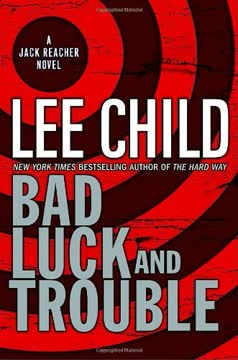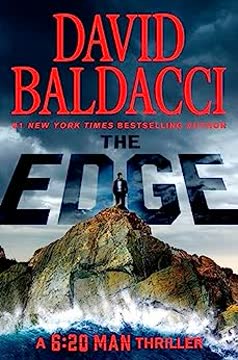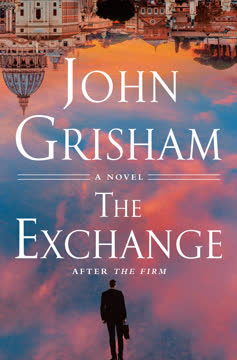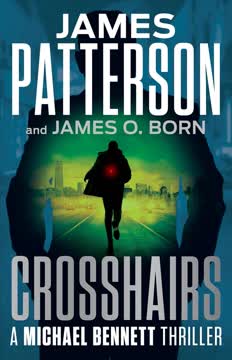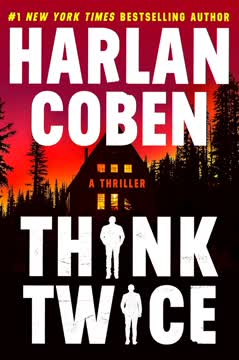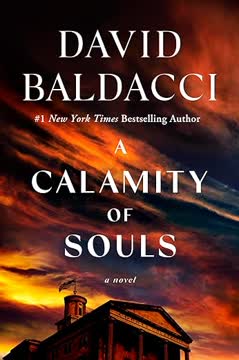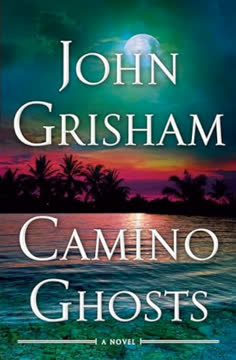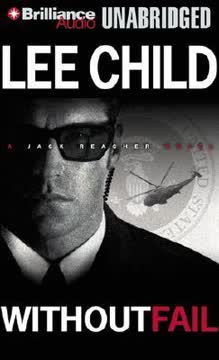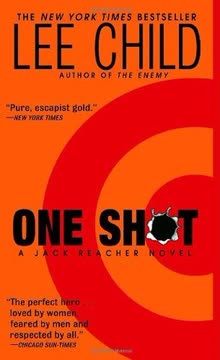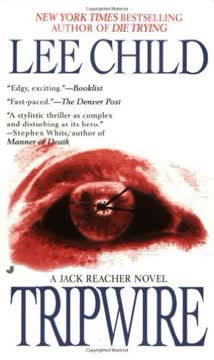Plot Summary
Bosch's Interrogation and McCaleb's Life
Detective Harry Bosch is in a holding cell, trying to extract a confession from a suspect, showcasing his relentless pursuit of justice. Meanwhile, Terry McCaleb, a retired FBI profiler, enjoys a peaceful life with his wife Graciela and their baby daughter, Cielo. This tranquility is disrupted when Detective Jaye Winston visits McCaleb, seeking his expertise on a gruesome murder case involving Edward Gunn. Despite his desire to leave his past behind, McCaleb is drawn back into the world of crime-solving.
A Mysterious Visitor Arrives
McCaleb's peaceful life is interrupted by Winston, who arrives with a murder book and a videotape, needing his help to solve a baffling murder. The victim, Edward Gunn, was found in a disturbing position, reminiscent of medieval torture. Intrigued by the case, McCaleb agrees to help, despite Graciela's concerns about the darkness he might encounter again.
A Murder Scene Unveiled
McCaleb watches the crime scene video, noting the ritualistic elements and the potential for a serial killer. Gunn's body is trussed with baling wire, a bucket over his head, and a cryptic Latin message on duct tape. The scene eerily resembles a painting by Hieronymus Bosch, drawing McCaleb deeper into the mystery and hinting at a connection to the detective Harry Bosch.
The Owl and the Artist
McCaleb discovers a plastic owl at the crime scene, leading him to research Hieronymus Bosch's paintings. The owl, a symbol of evil in Bosch's work, becomes a key piece of evidence. McCaleb learns that Bosch's real name is Hieronymus, and the unsettling connections between the detective and the artist's work make him suspect Bosch's involvement in the murder.
A Detective's Dark Connection
McCaleb delves into Bosch's past, recalling their work together on a case involving a nameless girl, Cielo Azul. Bosch's dedication to justice and his haunted demeanor make McCaleb question whether Bosch could have crossed the line. The connections between Bosch, the artist, and the murder scene are too strong to ignore, leaving McCaleb torn between respect for Bosch and the evidence pointing to him.
Trial Tensions and Hidden Motives
Bosch is in the midst of a high-profile trial, testifying against a powerful film director accused of murder. As he navigates the courtroom drama, McCaleb continues his investigation, uncovering more about Bosch's potential involvement in Gunn's death. The tension between Bosch's public persona and private suspicions grows, as McCaleb struggles with the possibility that his friend might be a killer.
A Night at Nat's Bar
Following a tip from Bosch, McCaleb visits Nat's Bar, frequented by Gunn. He questions the bartender Miranda and learns that Bosch has been seen there as well. The connections between Bosch and the murder victim deepen, leaving McCaleb with more questions than answers and a sense of unease about Bosch's true nature.
A Deadly Encounter on Board
Terry McCaleb is ambushed on his boat by Rudy Tafero, who attempts to kill him in a manner reminiscent of Edward Gunn's murder. Bound and choking, McCaleb is saved by Harry Bosch, who arrives just in time to subdue Tafero. The confrontation reveals Tafero's involvement in a plot to frame Bosch for Gunn's murder, orchestrated by David Storey. McCaleb's survival and Bosch's intervention set the stage for unraveling the conspiracy.
Bosch's Desperate Revelation
Bosch visits McCaleb, revealing his suspicion that Tafero and Storey conspired to frame him. Bosch's knowledge of Tafero's movements suggests he may have been aware of the plot all along, raising questions about his methods. McCaleb, grappling with his own role in the unfolding events, realizes the complexity of justice and the darkness that Bosch navigates. Their conversation underscores the moral ambiguities faced by those who pursue justice.
A Tense Courtroom Showdown
In court, Bosch confronts David Storey with evidence of his involvement in the murder plot. Storey's defense crumbles as Bosch reveals Tafero's arrest and confession. The courtroom drama intensifies as Storey is forced to plead guilty to multiple murders, avoiding the death penalty but facing life imprisonment. The trial's resolution highlights the intricate web of deceit and the lengths to which Storey went to manipulate the justice system.
The Truth Behind the Frame
Under pressure, Tafero confesses to his role in the murders, implicating Storey as the mastermind. The revelation of Storey's detailed plans, including drawings of the crime scene, confirms the premeditated nature of the frame against Bosch. The confession provides the prosecution with the evidence needed to secure Storey's conviction, unraveling the conspiracy and clearing Bosch's name.
A Final Confrontation at Sea
After the trial, McCaleb decides to leave the city and return to his family on Catalina Island. As he navigates the dark waters, he reflects on the events that transpired, the moral complexities of justice, and the personal cost of his involvement. The journey symbolizes a return to safety and a chance to reconcile with his family, leaving behind the darkness of the city.
A City of Second Chances
Alone on his deck, Bosch reflects on the case and his role in the justice system. Despite the moral ambiguities and personal sacrifices, he remains committed to his mission. The city, with its darkness and light, offers him a second chance to continue his pursuit of justice. Bosch's resolve is strengthened, knowing that even in a city of lost light, there is always hope for redemption.
Characters
Harry Bosch
Bosch is a seasoned LAPD detective known for his relentless pursuit of justice. He is deeply affected by the cases he works on, often seeing himself as an avenging angel for the victims. His connection to the murder of Edward Gunn is complicated by his past and his namesake, the artist Hieronymus Bosch. As McCaleb investigates, Bosch's motivations and mental state come into question, leaving his true nature ambiguous.
Terry McCaleb
McCaleb is a former FBI agent who has settled into a peaceful life with his family. Despite his desire to leave the darkness of his past behind, he is drawn back into the world of crime-solving by the Gunn case. His investigation leads him to suspect Bosch, a man he once respected, and he struggles with the implications of his findings.
Jaye Winston
Winston is a detective with the Los Angeles County Sheriff's Department. She enlists McCaleb's help on the Gunn case, hoping his profiling skills can uncover the truth. As the investigation progresses, she becomes entangled in the web of connections between Bosch, the murder, and the dark themes of Hieronymus Bosch's art.
Graciela McCaleb
Graciela is McCaleb's wife, a former nurse who now works at a school. She is supportive of McCaleb but worried about the toll the investigation might take on him. Her love for McCaleb and their daughter, Cielo, is a grounding force for him as he navigates the complexities of the case.
Edward Gunn
Gunn is a house painter with a criminal record, found dead in a gruesome manner. His murder is the catalyst for the investigation that draws McCaleb back into the world of crime-solving. Gunn's past and his connections to Bosch become central to the unfolding mystery.
Cielo McCaleb
Cielo is McCaleb's infant daughter, named after a nameless murder victim from his past. She represents a new beginning for McCaleb and a reminder of the innocence he seeks to protect. Her presence in his life is a source of strength and motivation.
David Storey
Storey is a powerful film director who orchestrates the plot to frame Bosch for murder. His manipulation of the justice system and willingness to sacrifice others for his own gain reveal his sociopathic tendencies. Storey's downfall serves as a cautionary tale about the dangers of unchecked ambition and the pursuit of power.
Annabelle Crowe
Crowe is a potential witness in the Storey trial, scared of the repercussions of testifying. Her reluctance to come forward adds another layer of complexity to the case, as Bosch must navigate the challenges of securing her testimony.
Miranda
Miranda is a bartender at Nat's Bar, where Gunn was a regular. She provides McCaleb with information about Gunn's habits and Bosch's presence at the bar, deepening the connections between the detective and the murder victim.
Buddy Lockridge
Lockridge is McCaleb's partner in the charter business, whose actions inadvertently complicate the investigation. His admission of using McCaleb's boat for personal encounters adds a layer of complexity to the case. Lockridge's loyalty and willingness to support McCaleb underscore the importance of trust and friendship.
Rudy Tafero
Tafero is a former LAPD detective who becomes entangled in Storey's plot to frame Bosch. His arrest and confession expose the conspiracy and highlight his fall from grace. Tafero's actions reflect the corrupting influence of power and the consequences of betrayal.
Plot Devices
Hieronymus Bosch's Art
The dark and disturbing works of Hieronymus Bosch serve as a key plot device, linking the murder of Edward Gunn to Detective Harry Bosch. The paintings' themes of sin, judgment, and damnation mirror the crime scene, creating a chilling connection between the past and present.
The Plastic Owl
The plastic owl found at the crime scene is a crucial piece of evidence. Its resemblance to the owls in Bosch's paintings ties the murder to the detective, raising questions about his involvement and the possibility of a setup.
The Trial
The trial of David Storey provides a backdrop of tension and pressure for Bosch. As he navigates the courtroom, the trial serves as a parallel to the investigation, highlighting the themes of justice and truth.
The Big Wheel Theory
Bosch's belief in the "big wheel" theory, where justice eventually catches up with wrongdoers, is a recurring theme. It reflects his motivations and actions, as well as the overarching narrative of the investigation and trial.
The Frame
The conspiracy to frame Bosch for Gunn's murder is a central plot device that drives the narrative. The meticulous planning and execution of the frame highlight the lengths to which Storey and Tafero are willing to go to achieve their goals. The unraveling of the frame serves as a testament to the power of truth and justice.
The Confession
Tafero's confession is a pivotal moment in the story, providing the evidence needed to convict Storey and clear Bosch's name. The confession underscores the theme of redemption and the possibility of justice prevailing, even in the face of overwhelming odds.
The City
The city of Los Angeles serves as a backdrop and a character in its own right, representing both the darkness and the potential for redemption. The city's dual nature reflects the moral complexities faced by the characters and the possibility of second chances.
Analysis
"A Darkness More Than Night" delves into the complexities of justice, morality, and the personal cost of pursuing truth. Through the intertwined narratives of Bosch and McCaleb, the novel explores the gray areas of law enforcement, where the line between right and wrong is often blurred. The use of Hieronymus Bosch's art as a thematic device underscores the darkness inherent in human nature and the struggle for redemption. The novel ultimately suggests that while justice may be elusive and fraught with moral ambiguity, the pursuit of truth remains a noble and necessary endeavor. The characters' journeys highlight the importance of integrity, perseverance, and the hope for second chances in a world where darkness often overshadows light.
Last updated:
FAQ
0. Synopsis & Basic Details
What is A Darkness More Than Night about?
- A Profiler's Return: A Darkness More Than Night follows retired FBI profiler Terry McCaleb, who, three years after a heart transplant, is drawn back into the world of crime when Sheriff's Detective Jaye Winston asks for his expertise on a baffling murder case. The victim, Edward Gunn, is found in a ritualistic pose, reminiscent of medieval art, hinting at a killer with a dark, symbolic agenda.
- Unsettling Connections Emerge: As McCaleb delves into the case, he uncovers disturbing parallels between the crime scene and the works of the 15th-century painter Hieronymus Bosch. The investigation takes a shocking turn when McCaleb realizes the lead LAPD detective on the original Gunn case, Harry Bosch, shares the painter's name and a deeply troubled past, leading McCaleb to suspect Bosch himself.
- A Web of Deceit and Justice: The narrative intertwines McCaleb's investigation with Harry Bosch's high-stakes murder trial against film director David Storey. McCaleb races against time to unravel a complex conspiracy, not only to solve Gunn's murder but also to determine if Harry Bosch is a cunning killer or the target of an elaborate frame-up, ultimately leading to a dramatic confrontation that exposes a deeper plot.
Why should I read A Darkness More Than Night?
- Deep Psychological Thriller: Readers seeking a novel that delves into the psychological complexities of its characters and the moral ambiguities of justice will find A Darkness More Than Night compelling. It explores themes of obsession, revenge, and the fine line between justice and vigilantism, offering a nuanced look at the human psyche under extreme pressure.
- Intricate Plot & Symbolism: The book is a masterclass in intricate plotting, weaving together art history, police procedure, and a chilling murder mystery. The pervasive symbolism, particularly the use of Hieronymus Bosch's art, adds layers of meaning and interpretive depth that reward close reading and discussion, making it a rich text for A Darkness More Than Night analysis.
- Connelly's Signature Style: Fans of Michael Connelly's work will appreciate the return of Terry McCaleb and the intense crossover with Harry Bosch, showcasing Connelly's ability to craft taut, character-driven narratives with unexpected twists. The novel offers a unique blend of procedural detail and profound emotional resonance, exploring the personal cost of living in "a darkness more than night."
What is the background of A Darkness More Than Night?
- Post-Transplant Life: The novel is set three years after Terry McCaleb's heart transplant, a pivotal event from Connelly's previous novel, Blood Work. This background is crucial to McCaleb's character, as he grapples with survivor's guilt and the physical limitations imposed by his new heart and daily medication, influencing his reluctance to re-enter the dark world of crime.
- Los Angeles's Underbelly: The story is deeply rooted in the gritty, often corrupt landscape of Los Angeles, from the serene Catalina Island to the bustling, morally ambiguous Hollywood Hills. Connelly uses the city as a character, highlighting its contrasts between glamour and squalor, and its capacity for both profound evil and the pursuit of justice, reflecting the themes in A Darkness More Than Night.
- Art Historical Allusion: A significant background element is the extensive use of Hieronymus Bosch's medieval paintings. The novel integrates real art history, particularly the dark, allegorical works like The Garden of Earthly Delights and The Stone Operation, as direct clues and thematic anchors for the murder investigation, adding a unique intertextual layer to the crime fiction genre.
What are the most memorable quotes in A Darkness More Than Night?
- "It's like having a gun to your head all the time.": Terry McCaleb's poignant description of fatherhood (Chapter 1) reveals his profound vulnerability and the immense love he feels for his daughter, Cielo. This quote encapsulates the theme of newfound responsibility and the fear of loss that anchors McCaleb's desire for a peaceful life, contrasting sharply with his old life's dangers.
- "Beware Beware God Sees.": The chilling Latin message found on the duct tape gagging Edward Gunn (Chapter 4) is a central piece of A Darkness More Than Night symbolism. Translated from "Cave Cave Dus Videt," it immediately elevates the murder from a simple homicide to a religiously motivated, ritualistic act, hinting at a killer who believes they are enacting divine judgment.
- "You don't go into the darkness without it going into you and taking its piece.": This profound observation (Chapter 22), articulated by McCaleb, speaks to the psychological toll of police work and the moral compromises inherent in fighting evil. It directly foreshadows the ethical dilemmas faced by both McCaleb and Bosch, highlighting the novel's exploration of the corrupting influence of the pursuit of justice.
What writing style, narrative choices, and literary techniques does Michael Connelly use?
- Dual Protagonist Perspective: Connelly employs a shifting third-person limited perspective, primarily alternating between Terry McCaleb and Harry Bosch. This narrative choice allows readers deep insight into the internal struggles and thought processes of both protagonists, creating tension and allowing for a complex, multi-layered investigation where the lines between hunter and hunted blur.
- Intertextual Symbolism: A key literary technique is the extensive use of intertextual references, particularly to the works of Hieronymus Bosch. The detailed descriptions of Bosch's paintings and their allegorical meanings serve as direct clues, thematic anchors, and a source of profound symbolism, enriching the A Darkness More Than Night analysis and elevating the crime narrative.
- Procedural Realism with Psychological Depth: Connelly's writing style is characterized by meticulous procedural detail, grounding the fantastical elements of the plot in believable police work. However, he transcends mere proceduralism by infusing the narrative with deep psychological exploration, using internal monologues and character interactions to reveal unspoken motivations and emotional turmoil, making the characters feel authentic and complex.
1. Hidden Details & Subtle Connections
What are some minor details that add significant meaning?
- The Unlocked Salon Door: McCaleb's observation that his boat's salon door was unlocked (Chapter 41) when he was attacked, despite his certainty of locking it, is a subtle but crucial detail. It hints at Tafero's prior access or knowledge of McCaleb's habits, suggesting a deeper level of surveillance and planning than initially apparent, reinforcing the intricate nature of the frame against Bosch.
- Bosch's "Lost Light" Metaphor: Harry Bosch's recollection of "lost light" in the Vietnam tunnels (Chapter 42) is a profound, seemingly throwaway detail. It symbolizes his enduring search for meaning and truth in morally ambiguous situations, suggesting that even in the deepest darkness, glimmers of understanding can be found, which he believes McCaleb has missed in his initial assessment of the case.
- The "Welcome Back Thelma!" Banner: The banner seen by McCaleb at the parole office (Chapter 10) and later by Bosch (Chapter 27) is a minor background detail that subtly highlights the cyclical nature of justice and redemption. It serves as a quiet counterpoint to the pervasive darkness, suggesting that even in a world of crime and violence, there are stories of survival and return, connecting to the broader themes in A Darkness More Than Night.
What are some subtle foreshadowing and callbacks?
- McCaleb's "Gun to Your Head" Remark: Early in the novel, McCaleb tells Winston that being a father is "like having a gun to your head all the time" (Chapter 1), explaining that if anything happens to Cielo, his life is over. This subtly foreshadows his near-death experience on the boat and the powerful image of his daughter that helps him fight for survival, emphasizing the stakes of his new life.
- Bosch's "Big Wheel" Theory: Harry Bosch's repeated assertion of the "big wheel" theory—that "what goes around comes around" and "nobody walks away" (Chapter 21)—serves as a constant thematic callback to his core belief in ultimate justice. This philosophy not only explains his relentless pursuit of criminals but also subtly foreshadows his willingness to allow Tafero's plot to unfold, trusting that the wheel would eventually turn against the true perpetrators.
- The Missing "Art of Darkness" Book: The detail of David Storey's missing book, Victims of the Night, from his bookshelf (Chapter 25) is a direct callback to the staging of Jody Krementz's murder. However, the later revelation that Storey had The Art of Darkness in jail (Chapter 40), a book with a chapter on Hieronymus Bosch, subtly foreshadows his meticulous planning of the frame-up, demonstrating his intellectual arrogance and the depth of his manipulation.
What are some unexpected character connections?
- Tafero's Link to Pounds's Murder: The revelation that Rudy Tafero was a "born again" cop aligned with Lieutenant Harvey Pounds (Chapter 40), the same lieutenant Bosch assaulted and who was later murdered, creates an unexpected and deep-seated motive for Tafero's hatred of Bosch. This personal vendetta, fueled by Bosch's indirect role in Pounds's death, provides a powerful, hidden motivation for Tafero to frame Bosch, going beyond mere financial gain from Storey.
- McCaleb's Shared Vulnerability with Bosch: Despite their adversarial positions, McCaleb and Bosch share a profound, unspoken connection through their experiences with trauma and loss. McCaleb's naming his daughter "Cielo Azul" (Chapter 21) after Bosch's nameless victim, and Bosch's later "lost light" story (Chapter 42), reveal a shared understanding of the darkness they navigate, creating an unexpected bond of mutual respect and empathy that transcends their immediate conflict.
- The Bartender's Knowledge of Bosch: Miranda, the bartender at Nat's (Chapter 22), casually mentions Bosch's infrequent visits and his specific drink order (Rolling Rock, after asking for Anchor Steam). This seemingly minor detail unexpectedly confirms Bosch's presence in a place connected to Gunn, adding a layer of complexity to his character and subtly hinting at his own private rituals or investigations, deepening the mystery around Harry Bosch's motivations.
Who are the most significant supporting characters?
- Rudy Tafero: The Architect of the Frame: Beyond being David Storey's investigator, Rudy Tafero emerges as a pivotal supporting character due to his deep-seated personal vendetta against Harry Bosch. His past as a "born again" cop and his connection to the murdered Lieutenant Pounds (Chapter 40) provide the crucial Rudy Tafero motivations for orchestrating the elaborate frame-up, making him far more than a simple henchman.
- Jaye Winston: The Bridge Between Worlds: Detective Jaye Winston is essential as the catalyst who draws McCaleb back into the game and the primary liaison between him and the official investigation. Her initial skepticism, growing belief in McCaleb's theories, and eventual willingness to risk her career (Chapter 17) highlight the institutional challenges of pursuing justice against a powerful figure like Storey and the internal politics of law enforcement.
- Penelope Fitzgerald: The Art Historian: Nep Fitzgerald, the curatorial assistant at the Getty (Chapter 11), is a crucial supporting character who unlocks the central mystery of the Hieronymus Bosch paintings. Her expertise provides McCaleb with the interpretive framework for the crime scene's symbolism, directly linking the medieval art to the modern murder and revealing the killer's intellectual conceit, which is vital for A Darkness More Than Night symbolism explained.
2. Psychological, Emotional, & Relational Analysis
What are some unspoken motivations of the characters?
- McCaleb's Redemption Arc: Beyond solving the case, McCaleb is driven by an unspoken need for redemption and to validate his "second shot at life" (Chapter 1). His intense focus on the case, despite Graciela's concerns, stems from a deep-seated belief that his survival must have a greater purpose than just catching fish, reflecting his internal struggle with Terry McCaleb's motivations.
- Bosch's Vigilante Justice: Harry Bosch's "big wheel" theory (Chapter 21) and his past actions, like assaulting Lieutenant Pounds for letting Gunn walk (Chapter 8), reveal an unspoken motivation for vigilante justice. He believes in a cosmic balance where wrongdoers eventually pay, and his willingness to let Tafero's plot against him unfold suggests a calculated risk to ensure Storey's downfall, even if it means operating in a morally gray area.
- Graciela's Fear of Loss: Graciela's unspoken motivation is a profound fear of losing McCaleb to the darkness of his past work, especially after his heart transplant. Her quiet disapproval and attempts to ground him in family life (Chapter 2, 28) stem from a desire to protect the fragile happiness they've built, highlighting the emotional toll McCaleb's work takes on his family.
What psychological complexities do the characters exhibit?
- McCaleb's Survivor's Guilt and Identity Crisis: Terry McCaleb grapples with profound survivor's guilt, feeling he lived because someone else died (Chapter 2). This manifests as an identity crisis, torn between the peaceful life he built and the intense, purposeful work of a profiler. His internal monologue reveals a constant battle between his desire for normalcy and the "thrill at the possibility of having a part of his old life again" (Chapter 1), a core aspect of Terry McCaleb's psychological analysis.
- Bosch's Avenging Angel Persona: Harry Bosch embodies the complex "avenging angel" archetype, driven by a deep-seated need to speak for the dead and punish evil, particularly stemming from his mother's unsolved murder (Chapter 22). His ability to operate on the "unseen edge beneath which lies the abyss" (Chapter 14) and his calculated risk in allowing Tafero's frame-up to proceed reveal a morally ambiguous but fiercely dedicated pursuit of justice, central to Harry Bosch's motivations.
- Storey's Narcissistic Arrogance: David Storey exhibits extreme narcissistic arrogance, believing himself "a god in this town" (Chapter 25) and immune to consequences. His meticulous planning of the murder scene based on Hieronymus Bosch's art, and his boastful confession to Harry Bosch, underscore a psychopathic need for control and intellectual superiority, making him a chilling antagonist whose David Storey analysis reveals a profound lack of empathy.
What are the major emotional turning points?
- McCaleb's Acceptance of the Case: The initial emotional turning point for McCaleb is his reluctant acceptance of Jaye Winston's case (Chapter 1). Despite his wife's unspoken objections and his own desire for a peaceful life, the "confusing rush of sensations" and the "thrill at the possibility of having a part of his old life again" signal his inevitable return to the darkness, setting the emotional trajectory for his character.
- The Hieronymus Bosch Connection: The discovery that the killer's message "Beware Beware God Sees" and the crime scene's staging directly reference Hieronymus Bosch's art (Chapter 4) is a major turning point. This revelation sends a "feathery run of adrenaline" up McCaleb's spine, transforming the case from a routine murder into a "holy shit" case with profound symbolic and psychological implications, deepening the A Darkness More Than Night themes.
- Bosch's Confrontation with McCaleb: Harry Bosch's unexpected appearance on McCaleb's boat (Chapter 42), confronting him about the profile and demanding he "find the missing piece," is a critical emotional turning point. This direct challenge forces McCaleb to re-evaluate his assumptions and shifts the narrative from a straightforward investigation to a complex, morally ambiguous quest for truth, where the lines between good and evil become increasingly blurred.
How do relationship dynamics evolve?
- McCaleb and Graciela: Strain and Reaffirmation: The relationship between Terry and Graciela McCaleb undergoes significant strain as Terry is drawn back into police work. Graciela's "unhappy" demeanor (Chapter 2) and her fear for his safety create tension, but their honest conversation about his true calling (Chapter 32) ultimately leads to a reaffirmation of their love, albeit with the understanding that his work is an intrinsic part of him, shaping the McCaleb family dynamics.
- McCaleb and Bosch: Adversaries to Allies: The dynamic between McCaleb and Harry Bosch evolves dramatically from initial professional respect to McCaleb's suspicion of Bosch as a killer, and finally to a reluctant alliance. Their shared experience of saving each other's lives (Chapter 43) and Bosch's trust in McCaleb to uncover the truth transforms their relationship into one of deep, if complicated, mutual understanding and respect, highlighting the complex Harry Bosch and Terry McCaleb relationship.
- Winston and McCaleb: Professional to Personal Risk: Jaye Winston's relationship with McCaleb shifts from a purely professional request for consultation to a partnership built on trust and shared risk. Her willingness to defy her superiors and protect McCaleb (Chapter 17, 33) demonstrates her commitment to justice and her growing belief in McCaleb's unconventional methods, even when it puts her career in jeopardy, showcasing the evolving Jaye Winston motivations.
4. Interpretation & Debate
Which parts of the story remain ambiguous or open-ended?
- Bosch's Full Culpability in Pounds's Death: While Bosch admits his actions "got him killed" (Chapter 40) in reference to Lieutenant Harvey Pounds, the exact nature of his culpability remains somewhat ambiguous. The story doesn't fully detail the "blind trail to some very powerful people" that Bosch was investigating, leaving open questions about the extent of his indirect involvement and the moral weight of his choices.
- The "Lost Light" and Bosch's Soul: Bosch's philosophical musings about "lost light" in the tunnels (Chapter 42) and his final reflection on the "city of lost light" (Chapter 47) leave his ultimate spiritual state open to interpretation. While he finds a "second chance," the narrative doesn't definitively resolve whether he has truly escaped the darkness or merely learned to navigate it, leaving his internal journey somewhat ambiguous for Harry Bosch analysis.
- The Future of McCaleb's Family Life: Despite McCaleb's reconciliation with Graciela and his decision to embrace his true calling (Chapter 32), the long-term stability of his family life remains open-ended. The novel concludes with him heading back to Catalina, but the inherent dangers of his work and Graciela's lingering fears suggest that their "normal" will always be a delicate balance, leaving readers to ponder the lasting impact of his choices on his family.
What are some debatable, controversial scenes or moments in A Darkness More Than Night?
- Bosch's Calculated Inaction in the Frame-Up: One of the most controversial aspects is Harry Bosch's apparent knowledge of Rudy Tafero's plot to frame him for Edward Gunn's murder, and his decision to "let it happen" (Chapter 46). This raises significant ethical questions about his methods, suggesting he used himself as bait to expose David Storey, a move that could be seen as reckless and morally questionable, sparking debate over Harry Bosch's motivations.
- **[Mc
Review Summary
A Darkness More Than Night brings together Harry Bosch and Terry McCaleb in a complex plot involving a ritualistic murder and a high-profile trial. Readers praise Connelly's skill in weaving the two storylines and developing the characters' relationship. While some found the pacing slow or disliked McCaleb's prominence, many appreciated the deeper exploration of Bosch's character and the unexpected twists. The courtroom scenes and art history references were highlights for many. Overall, fans consider it a solid entry in the series, though opinions vary on its ranking among Bosch novels.
Harry Bosch Universe Series
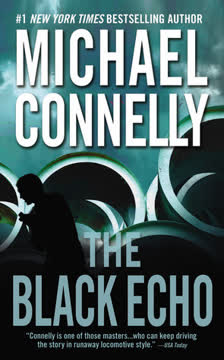
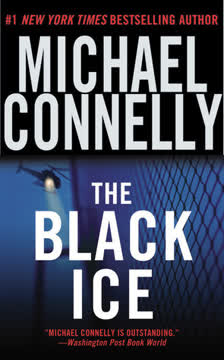
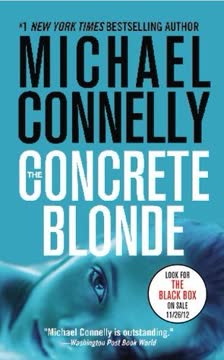
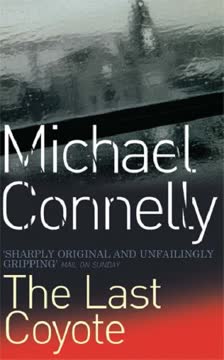
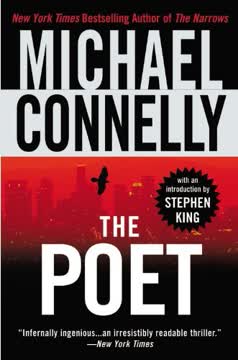
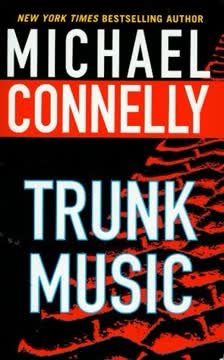
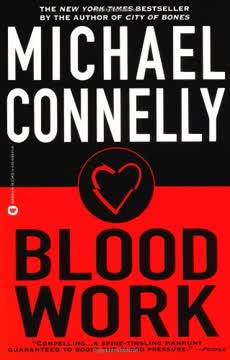
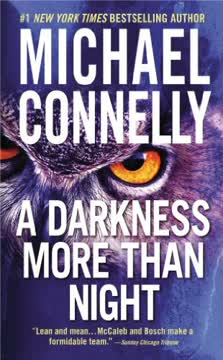
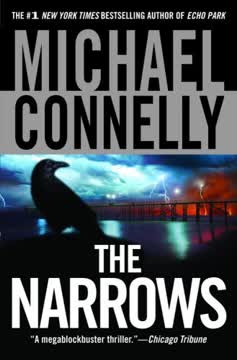
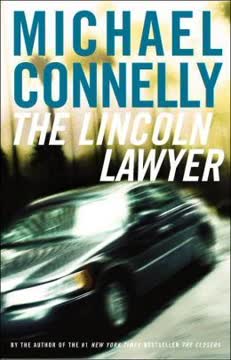
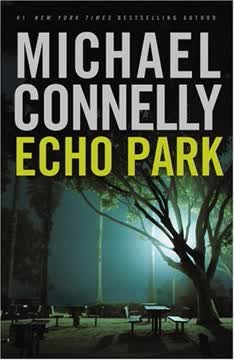
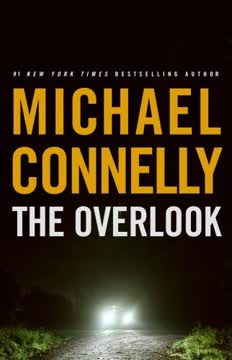
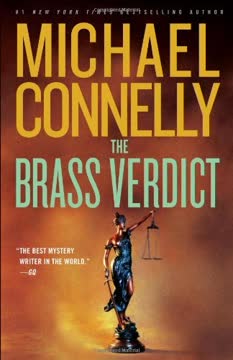
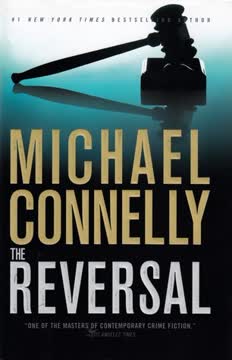
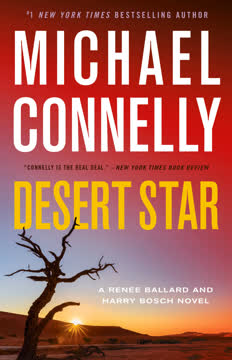
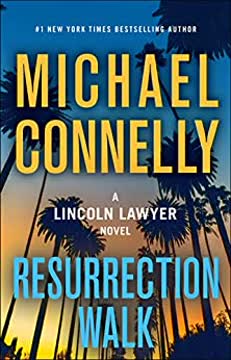
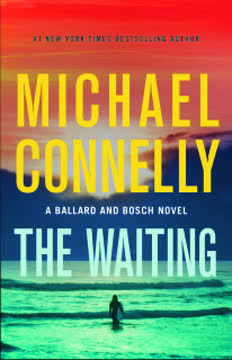
Similar Books
Download PDF
Download EPUB
.epub digital book format is ideal for reading ebooks on phones, tablets, and e-readers.
